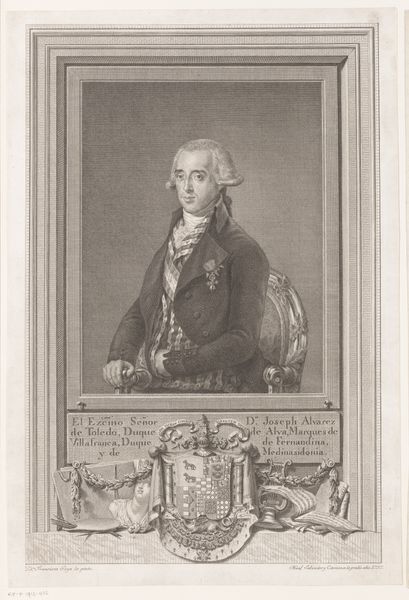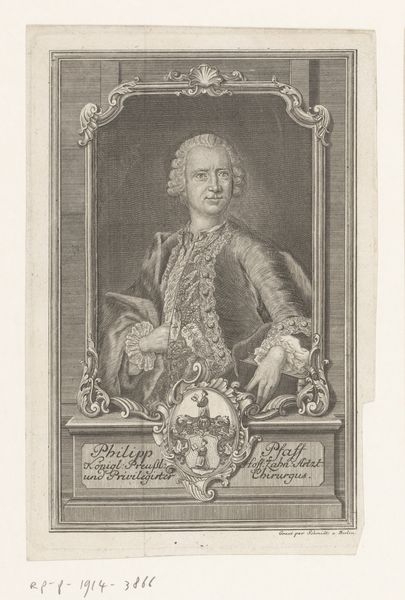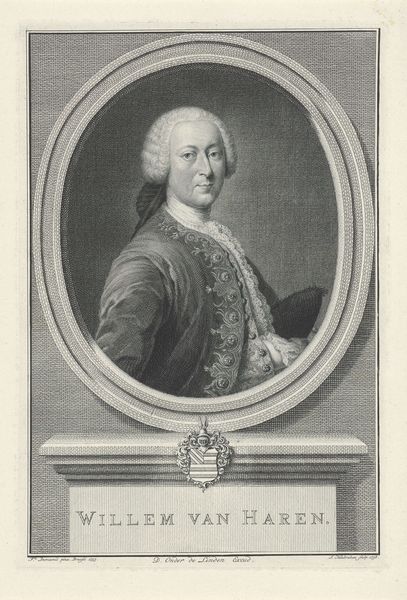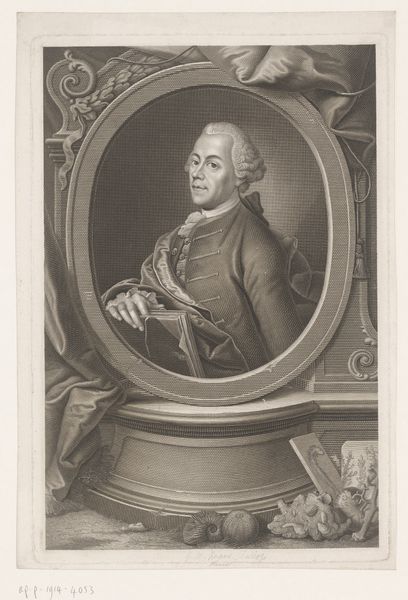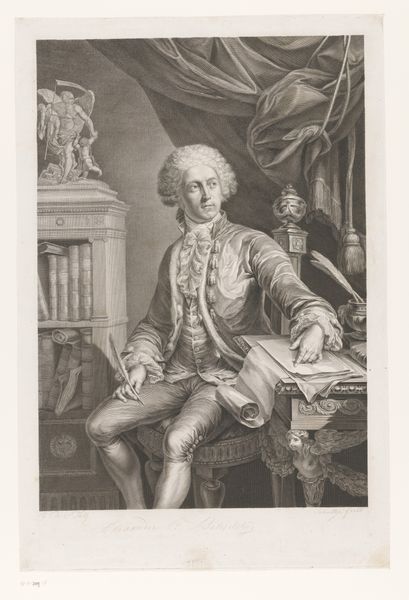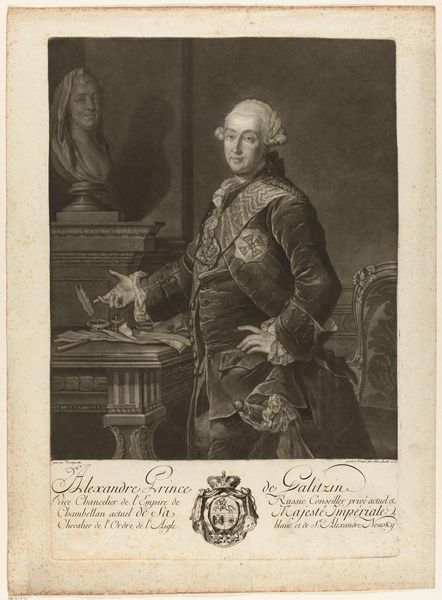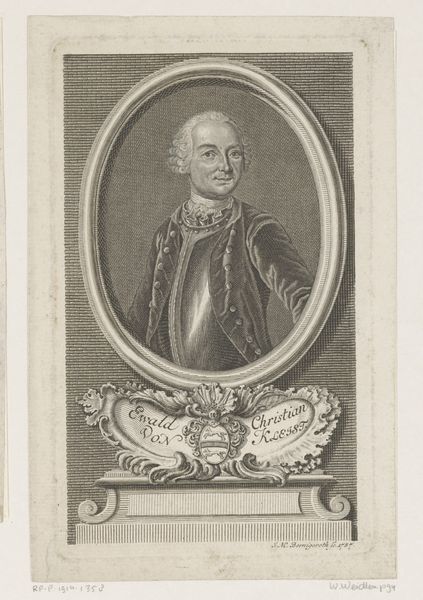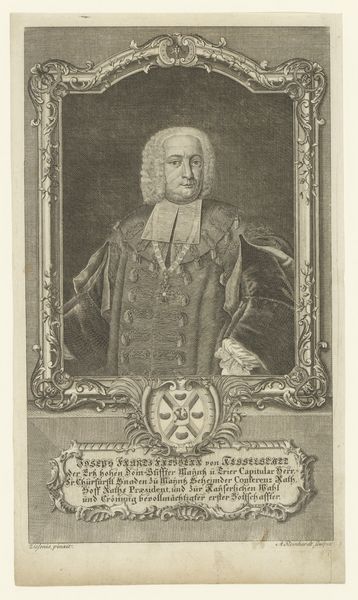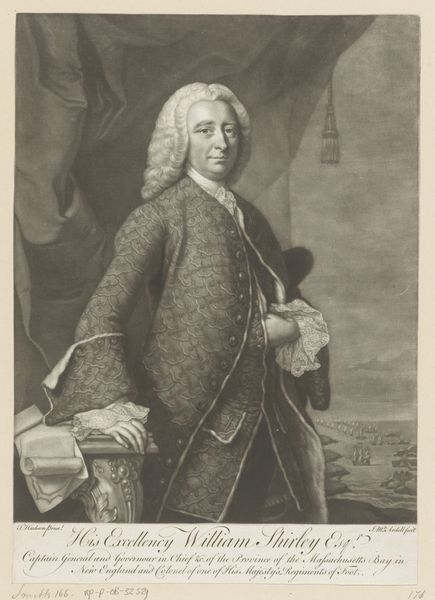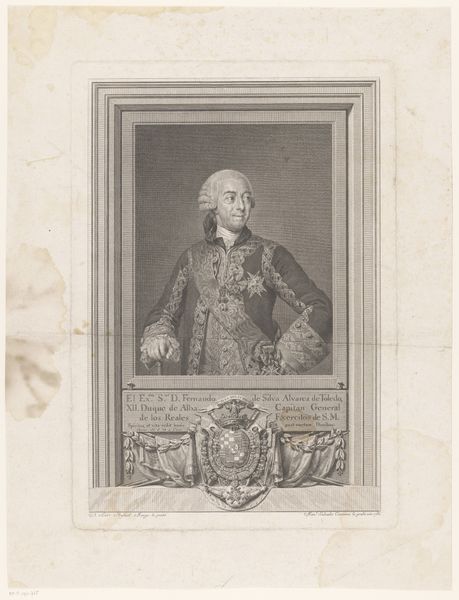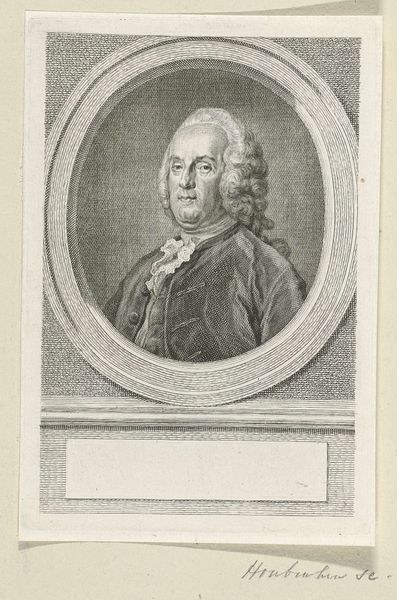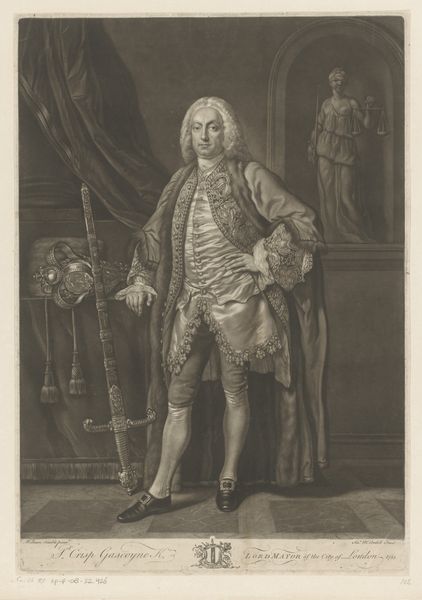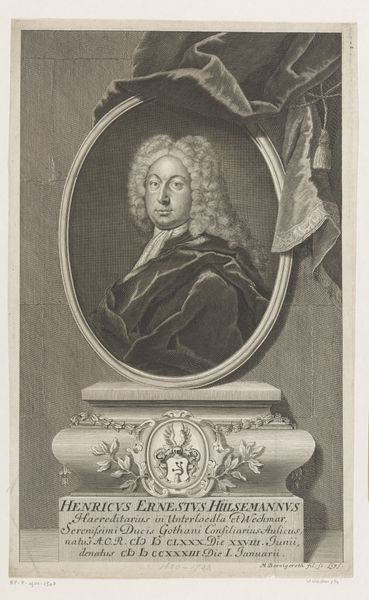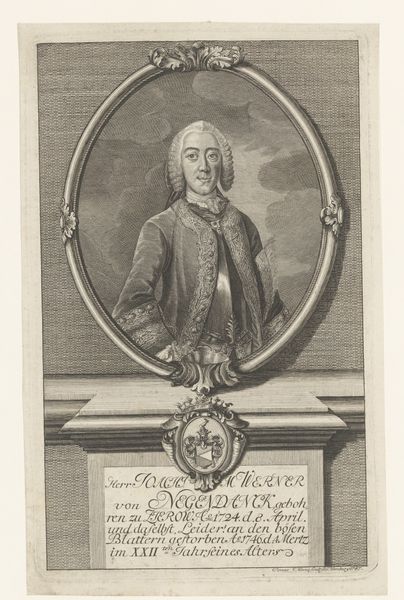
drawing, engraving
#
portrait
#
drawing
#
baroque
#
old engraving style
#
form
#
historical photography
#
framed image
#
line
#
academic-art
#
engraving
Dimensions: height 420 mm, width 277 mm
Copyright: Rijks Museum: Open Domain
Editor: Here we have Johann Wilhelm Windter’s "Portret van Adam Christoph Johann Stibar von Buttenheim," created in 1736. It's an engraving, and I'm immediately drawn to the incredible detail in the clothing. What speaks to you most about this piece? Curator: The immediate thing that catches my attention is the process. As a print, this work isn't merely *of* the sitter; it is *for* distribution. How many prints were made? Who was meant to possess this image and how does the consumption of this image reflect its meaning? Editor: That's interesting. It's easy to forget it's not just about the individual portrayed. Were engravings like this a common form of… I don't know, public relations at the time? Curator: Exactly! Consider the materials: the paper, the ink, the metal plate used to create the image. All required specialized labor and were indicative of a certain level of investment. These weren't cheap trinkets. The act of commissioning, producing, and disseminating this print becomes a statement of status, connecting Stibar von Buttenheim to networks of power and commerce. How does this alter your first perception? Editor: I hadn’t considered it from a business angle, thinking about the tradesmen who made this their livelihood. It reframes the image as less of a static representation and more of an active object, circulating within a specific social sphere. I definitely learned a lot from this approach! Curator: Likewise. Analyzing the production and material context really breathes life into what might seem like a standard portrait at first glance. It forces us to consider art not just as an aesthetic object, but as a product of complex social forces.
Comments
No comments
Be the first to comment and join the conversation on the ultimate creative platform.
